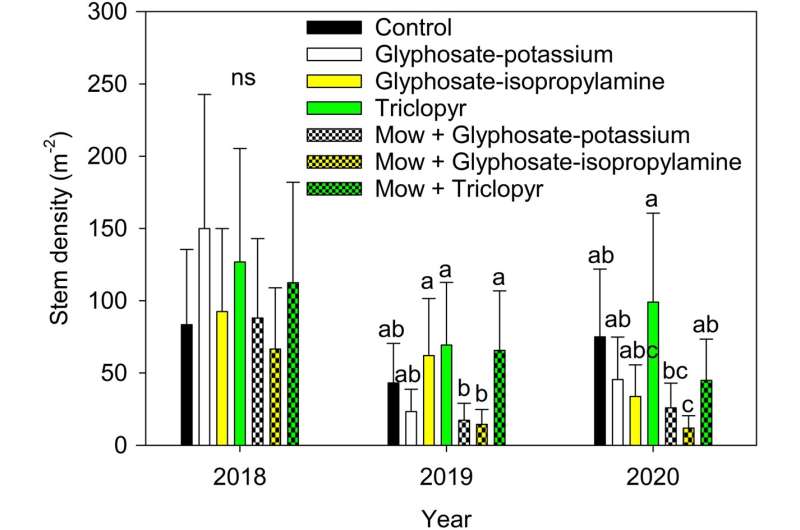This article has been reviewed according to Science X's editorial process and policies. Editors have highlighted the following attributes while ensuring the content's credibility:
fact-checked
trusted source
proofread
Study explores control options for black swallowwort

Black swallowwort is a difficult to control invasive vine that thrives in natural areas and perennial cropping systems across northeastern North America. To date, though, no scientific studies have been conducted to determine how the weed responds to common controls, such as mowing and broad-spectrum herbicides.
In an article featured in Invasive Plant Science and Management, researchers describe a three-year field study that begins to fill this information gap.
The team explored how black swallowwort responded to two glyphosate products and one triclopyr product. The weeds were either sprayed annually with a two percent solution of one the herbicides at flowering in early July—or were mowed in early July and then treated in late August.
The study showed the two glyphosate formulations were effective in reducing aboveground black swallowwort biomass, but they were less effective in reducing cover and stem densities. Researchers also determined that mowing failed to enhance the efficacy of the glyphosate applications on a consistent basis.
Triclopyr was generally ineffective in controlling black swallowwort—whether with or without mowing. The only significant effect of the herbicide was to increase grass cover in the test plots.
"Our study shows annual applications of glyphosate can be useful in managing infestations of black swallowwort vine," says Lindsey Milbrath of the USDA's Agricultural Research Service. "Further investigation will be needed to determine whether higher rates and more frequent applications of triclopyr can also deliver effective control."
More information: Lindsey R. Milbrath et al, Response of black swallowwort (Vincetoxicum nigrum) to herbicides plus mowing, Invasive Plant Science and Management (2022). DOI: 10.1017/inp.2022.27
Provided by Cambridge University Press
















